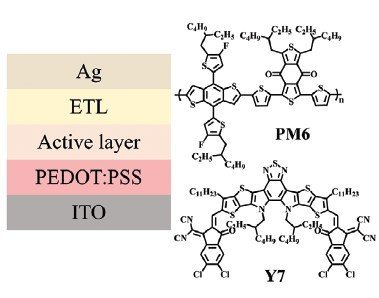An n-n Heterojunction Configuration for Efficient Electron Transport in Organic Photovoltaic Devices
Li, Y., Wu, X., Zuo, G., Wang, Y., Liu, X., Ma, Y., Li, B., Zhu, X.-H., Wu, H., Qing, J., Hou, L., Cai, W.,
Adv. Funct. Mater. 2022, 2209728. https://doi.org/10.1002/adfm.202209728
This work presents a new electron transport layer (ETL) configuration for organic photovoltaics (OPVs) that comprises a solution-processed n-n organic heterojunction. The n-n heterojunction is constructed by stacking a narrowband n-type conjugated polymer layer and a wide-band n-type conjugated molecule layer to enhance electron transport and hole blocking, and boost power conversion efficiency (PCE) in OPV.
The new ETL configuration leads to substantial improvements in performance in three OPVs with different active layers due to the combination of selective carrier transport properties and reduced recombination, as well as the good film-forming quality of the new ETL configuration.
Device Characterization: The transient photovoltage (TPV) and photocurrent (TPC) measurements were characterized with PAIOS system (Fluxim) under open-circuit condition and a short-circuit condition, respectively.

